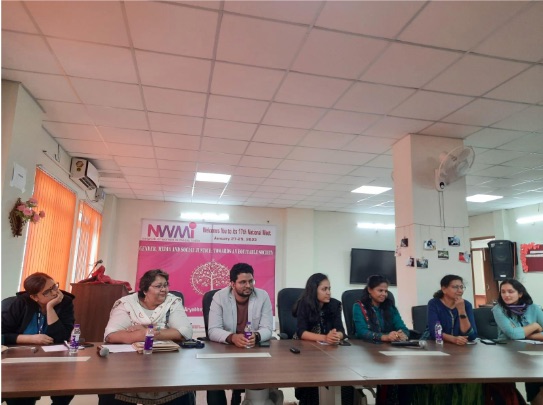
With the growing corporatisation of and state control over “mainstream” media, there is increasing frustration among both media persons and audiences with the content and format of news. With the political polarisation of legacy media, its “social media-isation” and apparent disinterest in issues that affect disadvantaged sections, newer trends in the media sphere provide hope. This session aimed to look at emerging directions in the media field, where independent initiatives are leveraging the hyperlocal, going beyond urban-centric media. What does the future hold for regional language and hyperlocal journalism and what hope can it offer for Indian democracy?
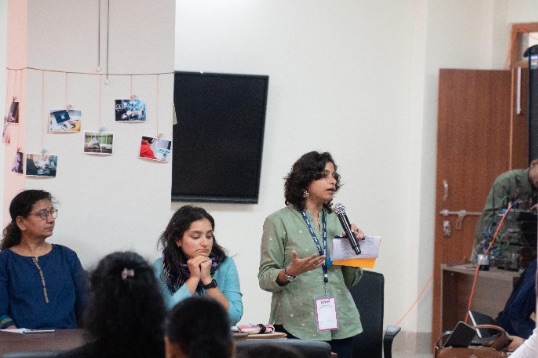
The first session of the 2023 meeting began with a panel discussion on hyperlocal media that engaged with the strengths and weaknesses of alternative social media platforms used by journalists, most of them working as independent journalists.

The moderator of the session, Sweta Singh, assistant professor, GGSIP University, New Delhi, welcomed the gathering and said that the panellists would talk about their reasons for using alternative media to share stories that mattered to the local population even though they recognise the power of new and emerging digital spaces for hyperlocal journalism.
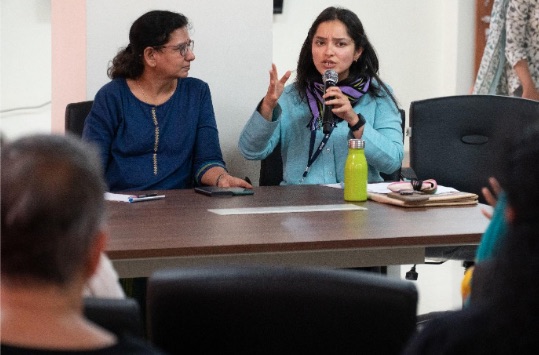
Aheli Moitra, formerly at the Morung Express (currently involved in research on local media for her PhD), focussed on independent media in Nagaland which, while hyperlocal in terms of its target audience and reach, are mainstream media in the context of Nagaland. She spoke about how the COVID pandemic had hit ‘traditional’ news institutions like the print media, and how it took newspapers a while to recover from the setback (many are still recovering, she said). She mentioned the rise of new media players in the broadcast and digital media space and pointed out that print media in the state also felt the need to develop their digital presence, if not to shift to digital entirely, but most lacked resources (financial and human) to do this. “There is need for more ‘collaborative journalism’ involving ‘mainlanders’ and journalists who belong to the northeast region,” she said, “so that they can help each other and exchange expertise, instead of continuing with the ‘leeching’ syndrome that defines the current relationship, the terms of which are set by the former for the latter.”
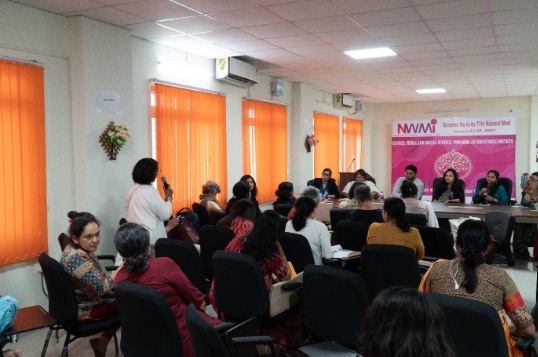
An independent journalist based in Siliguri, West Bengal, Anuradha Sharma spoke about how the ‘national’ media cover Darjeeling and other hill areas of the state of West Bengal. She dwelt upon the disconnect between the way Delhi, or even Kolkata, looks at the region and the ground realities that people face every day. She elaborated on the blinkered tendencies of the so-called mainstream media. “They train their focus on Darjeeling and surrounding areas only when there’s a law-and-order problem,” she pointed out. They tend to view extended periods of general strikes and agitations over the demand for a separate state of Gorkhaland as merely law and order situations, without giving a thought to the conditions that have given rise to the feeling of alienation and marginalisation among the people, she said.
Neetu Singh, who runs a YouTube Channel called Shades of Rural India, said that in view of the present situation of ‘mainstream’ media, there is a great need for hyperlocal reporting. According to her, hyperlocal media are currently the only ones left in which stories that do not find a place in the mainstream media can be covered.
Noticing the dearth of reporting on issues concerning rural women, Neetu left her job in 2020 and launched Shades of Rural India. She travels to different states to try and understand rural women’s concerns from their own perspectives. “We want to reach out to marginalised women and girls whose experiences do not make it into the ‘mainstream’ media. Over the past two and a half years, we have travelled to many districts of Jharkhand, Chhattisgarh, Orissa, Madhya Pradesh, West Bengal and U.P. We have tried to cover the issues of tribal communities,” she said.
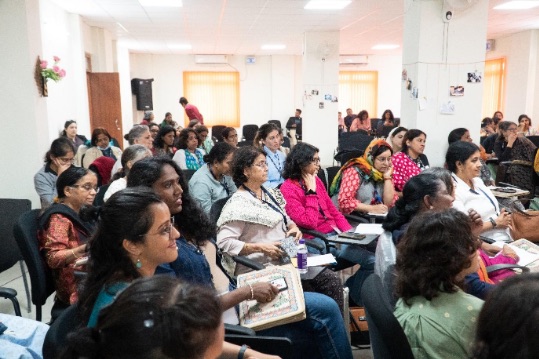
She pointed out that such initiatives by independent journalists are necessary and commendable but they work with limited resources. Channels like hers highlight news that does not attract TRPs and, in fact, operate at considerable risk and survival is a constant challenge. “When we talk about women journalists, these challenges and risks increase manifold, especially when they do ground reporting with limited resources. Despite these difficulties, it seems necessary to do this work – so we keep doing it. Many of the stories we have covered have received views in the millions,” she said.
“Our stories have had an impact and perhaps this is what results in the peace we have felt as independent journalists. There is currently a severe lack of reporting on rural issues. That is why many journalists like me have left their jobs and started YouTube channels which operate at a hyperlocal level,” she explained.
In the course of her work, Neetu realised that the people of the community whose stories they were covering could be encouraged become journalists. To increase the participation of rural women in journalism, she started the Meera Fellowship in the name of her late mother. The fellowship programme was launched on 3 November 2022, her mother’s 21st death anniversary. “We received 330 applications from 15 states of the country. Due to limited resources, we could not give an opportunity to many colleagues,” said Neetu. “However, with the help of five experienced jury members, we selected five Meera Fellows and they are currently reporting for Shades of Rural India from their localities. These are the grassroots stories of the people in remote areas, whom we are often unable to reach.”
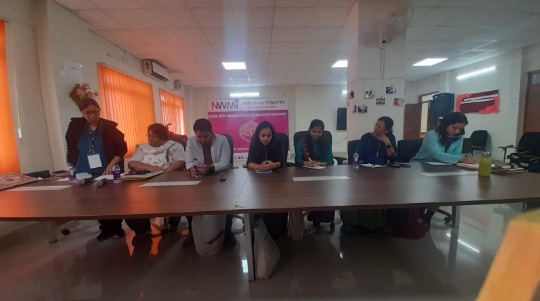
Priyanka Jha, from the Alt News Hindi portal involved in fact-checking, pointed out that all social media platforms have credibility problems. While WhatsApp may have a larger number of users in India and therefore appears to spread the most misinformation, the nature of the problem is the same across all platforms. “We have to look at the issue in a holistic manner,” she pointed out.
According to her, we need to reach out to children, perhaps in the 10-11 age group, before they imbibe and internalise biases, and teach them how to view and validate information, and how to recognise the difference between fact, opinion and propaganda. “Most misinformation is designed to trigger you at an emotional level,” she said. “Misinformation is what you are, in a way, compelled to share. The language that is used is designed to cause an emotional appeal in your head and, as a result, you end up forwarding something in an emotional state of mind.”
The amount of disinformation in the public sphere began to increase as its creation became more and more organised, she explained. The problem may have started with misinformation but now it is hate speech that is being spewed via social media. Once you have polarised society and targeted particular sections of the population using misinformation, it is much easier to propagate hate speech against them because you already have changed the mindset of people, she pointed out.
Priyanka cautioned that it is important to be aware that not all sources and pieces of information are reliable and that sometimes customarily reliable sources of information can make mistakes. One of the best ways to avoid falling for misinformation is to practice lateral reading, always checking if other reliable sources have published the same information. However, this is not completely reliable all the time, she clarified. It is necessary to read comments posted below articles, images or videos online as well as consult fact-checking websites to remain updated about narratives of misinformation.
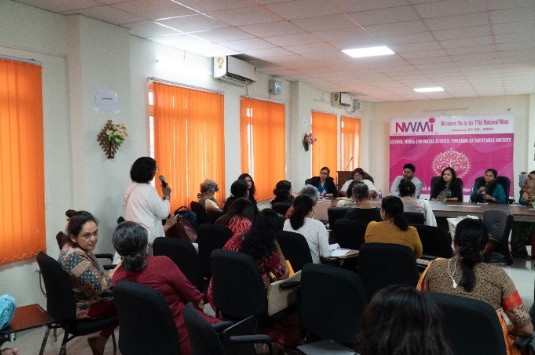
Tanzil Asif, founder, and CEO, Main Media, a hyperlocal news platform in Seemanchal region of north-eastern Bihar said, “If you are not shouting, running a propaganda or pleasing a particular group of audience by turning and twisting every story in their favour, it is not easy to run an independent news organisation. You don’t get enough views and engagement on social media for considerable revenue. So, it becomes very challenging. You have to keep looking for alternative sources of revenue.”
Main Media has survived so far on grants from Google News Initiative (GNI) and the Independent and Public-Spirited Media Foundation (IPMSF). An independent news organisation can only survive if audiences come forward to make crowdfunding or subscription models successful. He went on to say that hiring women journalists was a challenge as parents in rural areas did not encourage their daughters to become journalists, and those who did become journalists preferred to move to cities like Patna or Delhi. “So, it’s [a] challenge to keep the gender balance in the organisation,” he said.
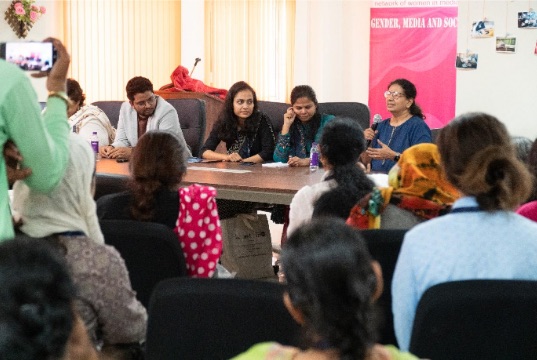
Independent journalist C. Vanaja, spoke about YouTube as the “new mass medium”, with a particular focus on Telugu YouTube channels. According to her, YouTube is to television, what OTT is to cinema. “We all need to use the medium, it is an important platform for independent and senior journalists,” she said, pointing out that it doesn’t need much technical expertise or investment to set up and run a YouTube channel and provides scope for many formats, both formal and informal. “I request all my friends here to use the medium, our voices are needed there. The right-wing has captured it,” she said.
For individuals, the best format, she finds, is ‘perspective videos. Since there is a flood of news, both ‘fake’ and authentic, on the internet, which includes social media, senior journalists can sift through the noise, connect the dots, read between the lines and provide much-needed perspective to help people make sense of it all. She gave the example of perspective videos put up by Dhruv Rathee. “If a non-journalist can do it, a journalist can do it better. In fact, there are hundreds of YouTube channels with good infrastructure and they have really made it big. In fact, some YouTube channels in Hyderabad have infrastructure matching with TV news channels,” she said.
Vanaja added that one doesn’t need to be confined to ‘hard’ news and analysis. “Journalists can start producing videos in their area of expertise. For instance, a Telugu sports journalist who specialised in cricket started a channel and got a huge following,” she said. “Take the example of Ravish Kumar. As soon as he left NDTV he switched to YouTube and has proven that nobody can stop him from what he was doing as a journalist. He too began with perspective videos. His videos are watched by millions and it works out financially too. There is Sakshi Joshi who switched from mainstream journalism to YouTube and is doing well. … not that everybody can make a living, but if one can get a couple of lakh subscriptions it can be sustainable,” said Vanaja. She cited the example of Thulasi Chandu from Hyderabad, who used her old phone to shoot, edit and upload videos initially. Soon she became a verified channel and is now a prominent current affairs journalist in Telugu. She has reached more people directly through YouTube than she did during her decade in mainstream journalism.
Vanaja highlighted the reality of online abuse. “Trolls are the biggest menace on YouTube. There are troll armies waiting to pounce. There are hundreds of fake ids subscribing to particular ideologies and political parties. Anything you say on YouTube against any of those parties will get a backlash…. But it is also a reminder that you are doing something to change the status quo. It is the people who advocate change and propagate progressive ideologies who are the most hated on social media,” she said.

Sonal Kellogg, founder and editor of Life News, which covers sexual violence and gender, discussed niche reporting in the context of hyperlocal journalism. She started in 2021 with a small team of paid freelancers. After funds ran out, it has largely been pro-bono work by journalists keen to fill the gaps in mainstream reporting who have kept the portal live.
Sexual crimes in India are heavily underreported even to the police, and only 6-8% of sexual abuse is reported. And only 2-3% of the 6-8% reported rapes are reported in the media. “This is a dismal situation. The government is aware of the high crimes against women and children and has put in place laws but they are poorly implemented which means there is hardly any conviction and there is no deterrent against sexual crimes,” she said. “My efforts to report on sexual crimes is to keep the spotlight on such crimes, especially against children so that this issue remains in the public consciousness.”


